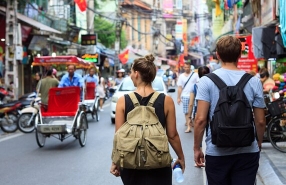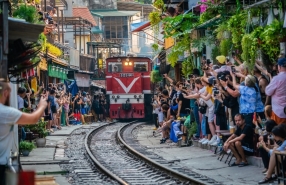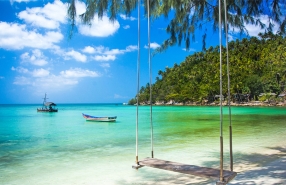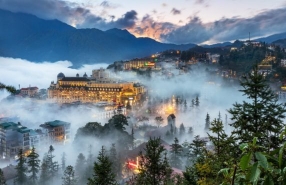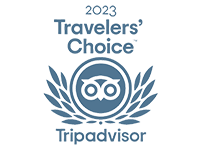What To Eat In Pakse? Top 6 Must-try Specialties In Pakse Laos

Pakse, located in the southern Lao province of Champasak, is much more than just a transit point to the Bolaven Plateau or a gateway to Wat Phou. It is also a must-see destination to discover Laotian dishes in all its authenticity. From savory soups and grilled meats to rich mountain-grown coffee, Pakse offers a feast for the taste buds. The best specialties in Pakse are often enjoyed in small street restaurants or in the bustling markets. To live this experience like a local, do not hesitate to call on a travel agency in Asia - Autour Asia who will be able to guide you off the beaten track. Here is our selection of dishes not to be missed for a successful gourmet immersion.
What to eat in Pakse Laos?
1. Laap (Larb) – one of the best specialties in Pakse
Laap, also known as larb, is widely considered the national dish of Laos. It is a minced meat salad — typically made with pork, chicken, beef, or fish — and is flavored with lime juice, fish sauce, fresh herbs, and ground toasted rice (khao khua). The dish is often spiced with fresh chili, resulting in a texture that is both crunchy and juicy, and a flavor that is vibrant and refreshing. This dish perfectly embodies the balance of acidity, saltiness, freshness and spiciness that is characteristic of Laos food.
Among the specialties in Pakse, laap is a must. To enjoy an excellent one, two addresses stand out: the Daolin Restaurant Café, where the duck version is very popular, and the Jasmine Restaurant, which offers a traditional version with herbs from the market. Use a little sticky rice (khao niew) to calm the chilli fire. A must-try as a starter or as a light dish with steamed vegetables!
2. Khao Piak Sen – The Morning Comfort Soup
What to eat in Pakse ? If you're looking for a hot and sweet meal when you wake up, don't miss Khao Piak Sen. This thick rice noodle soup is prepared in a broth simmered for a long time with chicken or pork. The addition of garlic, ginger, cilantro, and sometimes lime gives it a comforting, balanced flavor. It is one of the most popular breakfast dishes in Laos, both nourishing and easy to digest.

Head to Xuan Mai Restaurant, a popular spot for its delicately flavored broth. Alternatively, head to the morning market in Pakse, where you'll find street food stalls serving Khao Piak Sen for less than 10,000 LAK (about $0.50). For extra character, add a splash of nam pla (fish sauce) and a pinch of ground chili. This simple, yet tasty dish is one of the best specialties in Pakse and warms the heart first thing in the morning.
3. Tam Mak Hoong - Lao Green Papaya Salad
Tam Mak Hoong is the Laotian version of the famous Thai som tam. This ultra-spicy salad made with grated green papaya is seasoned with garlic, lemon juice, sugar, chili pepper and especially padek, a fermented fish paste that gives it a unique and intense flavor. The crunch of papaya and peanuts contrasts with the power of chili pepper and the umami of padek, for a true explosion of flavors. Among the specialties in Pakse, this colorful dish full of character appeals to thrill seekers.

It is also one of the most emblematic traditional Laotian dishes. For an authentic experience, head to Daoheuang Market, where vendors prepare the salad right in front of you, tailored to your preferences. If you prefer a milder version, try it at Sabaidee Pakse Restaurant, where you can ask for a "bor pheret" (not too spicy) salad. This dish can be enjoyed either as a side or as a complete meal when served with sticky rice and a selection of fresh vegetables.
4. Ping Pa – grilled fish from the Mekong
There's nothing like a good Ping Pa to taste the authentic flavors of the Mekong. It is a fresh fish (often pa nok or pa beuk) stuffed with lemongrass and kaffir leaves, then grilled over charcoal. Its skin becomes crispy while the flesh remains tender and fragrant. Accompanied by jaew sauce (a spicy tomato sauce), this dish is one of the traditional Laotian dishes that is a must.
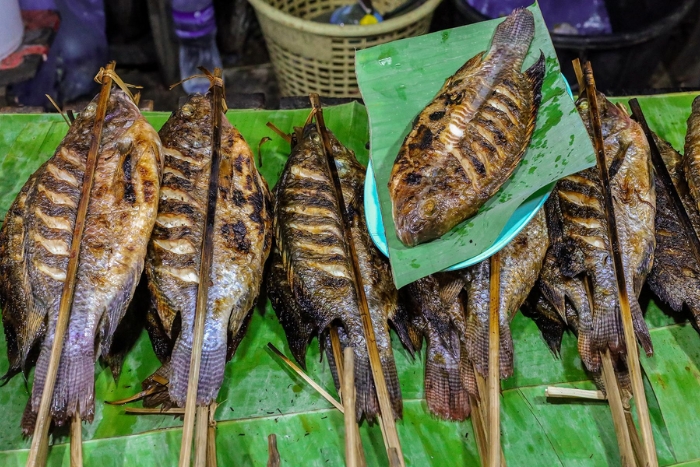
Among the specialties in Pakse, Ping Pa is particularly popular during riverside meals. The best places to enjoy it are the floating restaurants on the Mekong River, perfect for a romantic dinner with a view of the sunset. The Riverside Pakse BBQ is also renowned for its perfect cooking and friendly atmosphere. Pro tip: opt for a medium-sized fish, around 30 cm, for more tender flesh and fewer bones. All accompanied by a basket of sticky rice, of course!
5. What to eat in Pakse ? Or Lam
Or Lam is a rustic and emblematic dish of northern Laos, but can also be found in Pakse in its local version. It is a stew made with meat (often chicken or beef), bitter eggplant, forest mushrooms, squash, and sakhaan, a peppery vine that tingles the tongue slightly. It's all slowly simmered with spices like mace, ginger, and sometimes sandalwood. This traditional Laotian dishes perfectly represents the richness of Laos food.
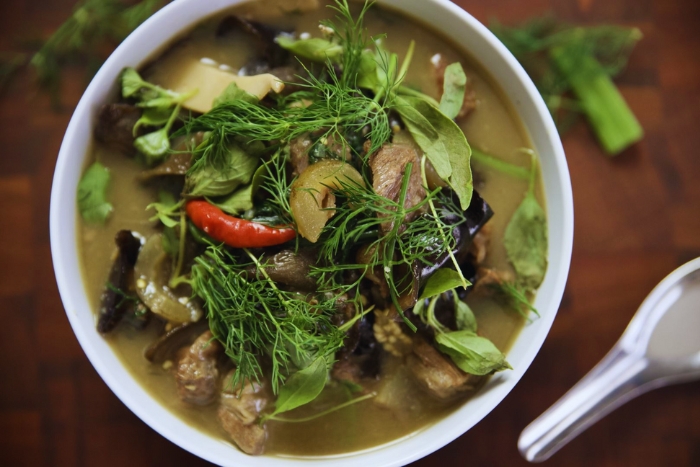
For a refined version with a panoramic view, book a table at the restaurant Le Panorama, on the roof of a hotel. For a more authentic experience, you have to go up to the Bolaven plateau and discover the Or Lam in the homes of the locals, where the recipe is passed down from generation to generation. Enjoy with rice vermicelli (khao poon) that absorbs the sauce wonderfully. A unique culinary immersion!
6. Bolaven Plateau Coffee – The Black Gold of Champasak
It is impossible to leave Pakse without tasting the coffee of the Bolaven plateau, a real pride of the Champasak region, which is one of the specialties in Pakse. Grown between 1,200 and 1,300 meters above sea level, the local Arabica is renowned for its rich aromas of dark chocolate, hazelnut and red fruits. Less acidic than African coffees, it has a roundness in the mouth that is much appreciated. Robusta is also grown here, ideal for lovers of strong coffee.

For a gourmet break, take a seat at Café Sinouk, which roasts its own beans on site and offers delicious homemade pastries. Koffie's Café, more modern, offers different preparation methods such as chemex or cold brew, to reveal all the subtleties of the beans. Remember to bring back a bag of roasted beans in "medium roast" (about 7,000 LAK for 100 g): a local, useful and delicious souvenir to share!
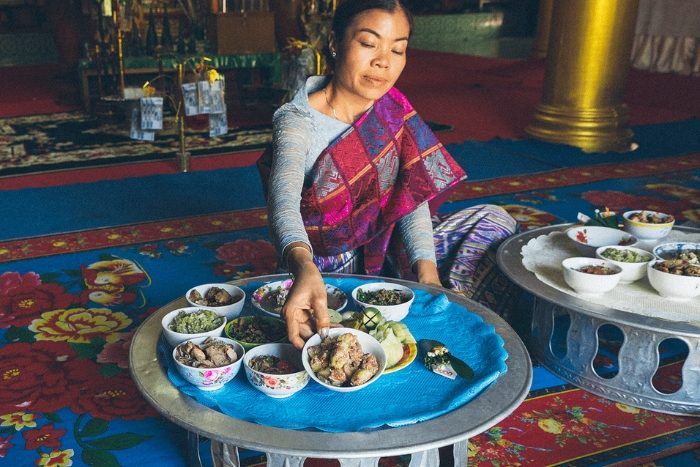
Eating in Pakse is much more than just eating. It is to immerse yourself in the soul of Laos, to feel the ancestral traditions and to discover the hospitality of the locals through their dishes. Whether you're a fan of street food or more refined gastronomy, each bite will bring you a little closer to this generous and spicy culture. Among the specialties in Pakse, local flavors tell a unique story. To better prepare your itinerary, here are the tips that Autour Asia – travel agency in Asia has shared, hoping that they will help you fully explore these culinary riches.
Enjoy your meal – or as they say in Laos: "Kin khao der"!
>>> 6 Best Things To Do In Pakse Laos
>>> Pakse Travel Guide
>>> Laos travel itinerary 2 weeks
>>> Laos Packages Tours
The city itself offers few activities, so it is essential to provide transportation. Renting a scooter or motorbike remains the best option to discover the surroundings freely, especially if you follow a Laos travel itinerary 2 weeks in search of adventure and authenticity.
You can choose between the Short Loop (minimum 2 days, but 3 are recommended, or even 4 to fully enjoy it) and the Long Loop (minimum 3 days, but 4 to 5 days are ideal). The latter covers more kilometers, an additional waterfall and allows you to discover more of the specialties in Pakse. Incorporating this loop into your itinerary also means exploring local flavors in the heart of southern Laos.
Pakse is one of those places that has some nice surprises in store. At first glance, it seems to be just a peaceful little town on the Mekong River. But if you spend a little time there, you realize that it is surrounded by grandiose landscapes and countless waterfalls. In addition to its generous nature, Pakse also seduces with Laotian cuisine, rich in flavors and traditions, which can be discovered both in the markets and in small local restaurants.
Related travel guide
Other similar articles
CUSTOMIZABLE BY LOCAL EXPERTS
Personalized trip at the original price!
REFUND GUARANTEE
We believe in our work and promise to give you money back.
GOOD PRICE / QUALITY
95% satisfied more than expected!
24/7 LOCAL SUPPORT
We are always available online to provide assistance at any time.
Most read articles
Autour Asia is highly recommended on
Embracing the mission of "Satisfied more than expected" and providing authentic experiences, we have received numerous recommendations on reputable travel forums:











